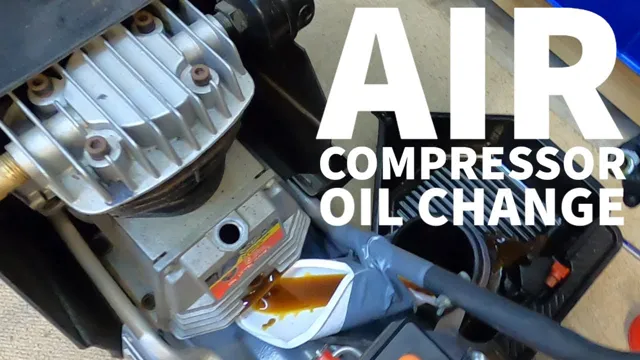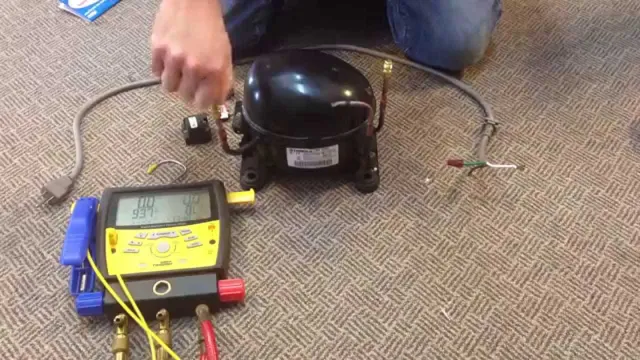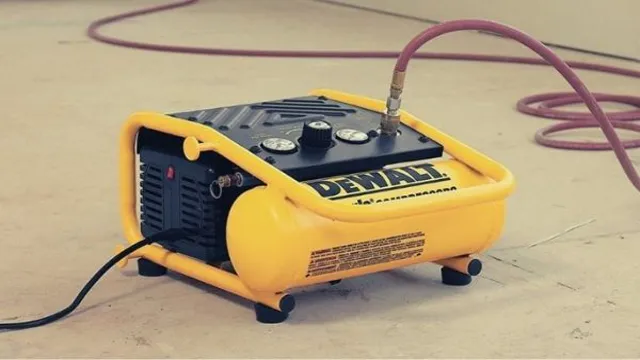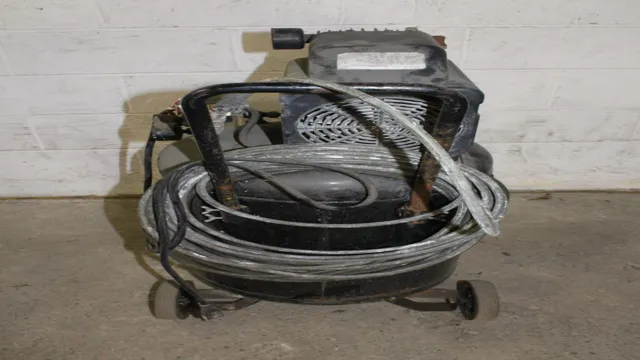What Does the Air Compressor Governor Do and Why Do You Need One?
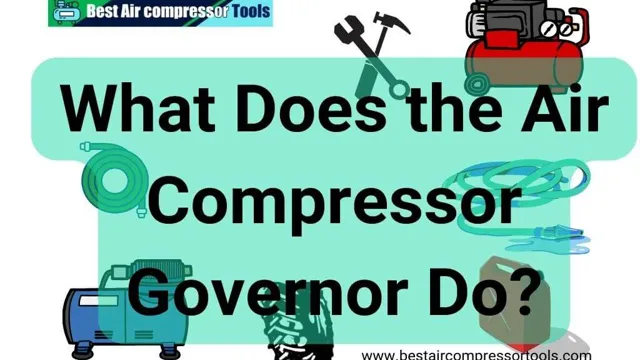
Air compressors are indispensable machines in various industries, and their popularity across various applications is increasing. But have you ever paid attention to the air compressor governor? The governor plays a crucial role in maintaining the air compressor’s optimal efficiency and preventing it from overheating or causing significant damage. In simple terms, the governor is an essential component in the air compressor system that regulates the machine’s output pressure.
It controls the speed of the compressor and ensures it runs at a constant rate, irrespective of the demanded air flow. This function not only saves energy but also enhances the compressor’s productivity, making it an integral part of any air compressor. Understanding the air compressor governor is crucial for avoiding costly repairs and ensuring optimal performance.
Without it, the compressor could overheat, leading to sluggish operations, decreased productivity, and an eventual shutdown. Therefore, it’s essential to ensure the governor is adequately maintained and operational. In this blog, we will delve deeper into the workings of the air compressor governor, explore its critical components, and understand how it contributes to overall system efficiency.
We will also discuss some of the common problems that arise from governor malfunction and how to diagnose and repair them. So, buckle up and keep reading to learn more about the essential air compressor governor.
What is an Air Compressor Governor?
If you’re wondering what an air compressor governor is and what it does, you’ve come to the right place! An air compressor governor is essentially a device that regulates the air pressure delivered by an air compressor. It does this by monitoring the pressure in the tank and adjusting the flow of air into the tank accordingly. In essence, it limits the pressure so that it doesn’t exceed a certain level, preventing damage to the air compressor and ensuring that the air tools being used are operated safely and efficiently.
Think of it as the traffic cop of the air compressor world, keeping everything running smoothly and preventing any accidents or mishaps along the way. So if you’re using an air compressor, make sure to pay attention to your governor and keep it well-maintained to ensure the best possible performance and safety.
Function of the Governor
An air compressor governor is an essential component of an air compressor system that helps regulate the flow of compressed air. Its main function is to control the speed of the compressors and ensure that they run at a consistent speed, regardless of the load demand. A governor typically consists of a valve, spring, and diaphragm and is located on the compressor’s control panel.
When the compressor starts up, the governor senses the air pressure and adjusts the valve accordingly, allowing the compressor to run at a consistent speed. The governor is an essential safety feature as it prevents the compressor from overloading and causing damage to the system. Overall, air compressor governors are critical components of air compressor systems that help ensure the smooth and efficient operation of the compressors.
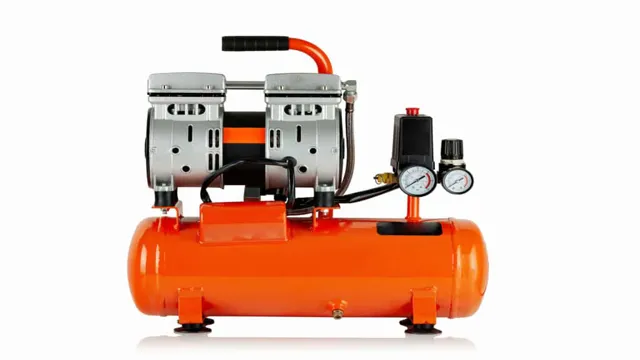
Types of Compressor Governors
An air compressor governor is an essential accessory in an air compressor system that regulates the pressure and flow of compressed air. It’s a mechanism that continuously monitors and adjusts the pressure based on the required output, ensuring consistent and optimal performance. There are various types of compressor governors, including mechanical, electrical, and pneumatic governors.
The mechanical governor operates through a series of levers and springs that control the opening and closing of the compressor’s inlet valve, while the electrical governor uses sensors and electronic signals to adjust the position of the inlet valve. The pneumatic governor works by utilizing compressed air to regulate the pressure, and it’s commonly used in industrial air compressors. Each type of compressor governor has its advantages and disadvantages, so it’s essential to consider the specific requirements of your air compressor system before selecting one.
By choosing the right governor, you can ensure the efficient and reliable operation of your air compressor system while prolonging its lifespan and reducing downtime.
How does it Work?
Air compressor governors are devices that prevent the air pressure within a compressor from surpassing predetermined safety levels. They work by regulating the idle speed of the compressor, which controls the amount of air that is generated. The governor keeps the compressor within a safe pressure range by automatically adjusting the engine throttle.
In other words, they detect the air pressure within a compressor and signal the engine to slow down or speed up depending on whether the pressure is too high or too low. This ensures that the compressor operates at safe levels and prevents potential mechanical failure or accidents. Essentially, the governor plays a crucial role in maintaining the safety and efficiency of air compressor systems.
By regulating the air pressure, the air compressor governor improves the lifespan of the equipment while providing consistent and reliable performance.
Air Pressure Sensors
Air pressure sensors are devices that measure the amount of air pressure in a given space. They are commonly used in a variety of applications, including weather forecasting, aviation, and manufacturing. But how do these sensors actually work? Simply put, air pressure sensors rely on a change in resistance to measure pressure.
When pressure is applied to a sensor, it causes the resistance within the sensor to change. This change is then converted into an electrical current, which can be measured and used to determine the amount of pressure present. One analogy to think of how air pressure sensors work is to imagine squeezing a balloon.
As you squeeze the balloon, you can feel the resistance increase. Similarly, air pressure sensors measure the resistance that occurs when pressure is exerted on them. With this information, they can provide accurate readings of air pressure, making them a useful tool in many different industries.
Control Circuitry
When it comes to modern electronics, control circuitry plays a crucial role in making sure everything runs smoothly. Essentially, control circuitry is responsible for monitoring and adjusting various inputs and outputs within a system, ensuring that everything is operating as intended. This can involve everything from temperature control to power regulation, and any number of other critical functions.
At its core, control circuitry works by taking in data from various sensors and using that information to determine whether any adjustments need to be made. It then sends signals to the appropriate parts of the system, allowing them to make those necessary changes. Essentially, control circuitry serves as the “brain” of many electronics systems, allowing them to function efficiently and reliably.
Overall, it’s a fascinating and complex technology that is essential to many of the devices we use in our daily lives.
Unloader Mechanism
The unloader mechanism in air compressors is a critical component that prevents the buildup of pressure in the compressor tank by releasing compressed air once it reaches a certain level. Essentially, it works by sensing the pressure in the tank and signaling the compressor to stop pumping air once the tank reaches its maximum capacity. The unloader valve releases the remaining compressed air through a small tube or hose, ensuring that the pressure doesn’t exceed the safe limit.
Once the unloader valve has released all the compressed air, it signals the compressor to start pumping air again and repeat the cycle. Think of it like a safety valve that prevents the compressor from exploding due to pressure buildup. Without the unloader mechanism, air compressors would be much less safe and could cause serious damage or injury if not managed properly.
So, next time you’re using an air compressor, remember to thank the unloader mechanism for keeping you and your tools safe!
Importance of Governor Maintenance
If you drive a vehicle with an air brake system, you might have heard of an air compressor governor. It is a vital component that regulates the air pressure in the brake system and ensures safe and efficient braking. Without a governor, the air pressure could drop too low, making it difficult to stop the vehicle.
On the other hand, excessive pressure can cause the brakes to lock up, leading to skidding and loss of control. Therefore, it is essential to maintain the governor regularly to prevent such hazards. A well-maintained governor can also improve the fuel efficiency of the vehicle and extend the life of the brake system.
So, don’t overlook the importance of governor maintenance and keep your brakes in excellent working condition.
Benefits of Regular Maintenance
Regular maintenance ensures that all parts of a machine are working properly, including the governor. The governor is an essential component that regulates the speed of an engine, and it is important to ensure that it is in good condition through regular maintenance. Failing to maintain the governor can lead to inefficiencies and potential safety hazards, such as overspeeding.
Regular maintenance of the governor involves inspecting and cleaning it, as well as replacing worn out parts. By prioritizing regular maintenance, you can ensure that your governor functions optimally and prolong the lifespan of the entire machine. Remember that neglecting small maintenance tasks such as governor maintenance can lead to more significant problems down the line, and it is better to take care of them before they escalate.
Overall, the importance of governor maintenance cannot be overstated as it contributes significantly to the efficient operation of any machine.
Signs of a Faulty Governor
Governor Maintenance, Faulty Governor Governors are critical components in engines, responsible for controlling the speed of the motor by regulating the fuel supply. However, like any other part of an engine, governors can break down and fail to perform their intended tasks. Some of the signs of a faulty governor include fluctuations in engine speed, engine stalling, and failure to return to idle speed after throttle adjustments.
Regular maintenance of governors is essential to prevent these issues from arising and ensure optimal engine performance. Neglecting governor maintenance could lead to engine failure, increased fuel consumption, and reduced overall machine efficiency. It’s critical to have a professional mechanic inspect and service the governor regularly to prevent unexpected breakdowns and ensure peak efficiency of your engine.
Remember, a stitch in time saves nine, so don’t skimp on your governor maintenance regime.
Conclusion
The air compressor governor is the wise and watchful protector of your air compressor, ensuring that it’s always operating at just the right pressure. Like a skilled conductor leading a symphony, the governor monitors and adjusts the speed of the compressor, allowing it to produce the perfect amount of compressed air without going overboard. In short, the governor is the unsung hero of your compressor, quietly keeping things in check so that your tools and machinery can perform at their best.
Without it, your air compressor would be like a ship without a captain – lost at sea and unable to navigate the choppy waters of compressed air production. So remember to give your governor some love and appreciation – it may not be flashy or glamorous, but it’s an essential component of any air compressor that deserves some respect.”
FAQs
What is an air compressor governor used for?
An air compressor governor is used to control the pressure output of an air compressor and regulate the flow of compressed air throughout a system.
How does an air compressor governor work?
An air compressor governor uses a pressure switch to monitor the air pressure output of the compressor and adjust the compressor’s operation to maintain a consistent pressure output.
What happens if the air compressor governor fails?
If an air compressor governor fails, it can result in a loss of pressure control and cause damage to the compressor or the machinery that it powers.
Can an air compressor work without a governor?
While an air compressor can technically operate without a governor, it is not recommended as it can result in unstable pressure output, excess wear and tear on the compressor, and potential damage to the machinery powered by the compressor.
How often should the air compressor governor be inspected or replaced?
It is recommended to inspect the air compressor governor regularly, and replace it as needed based on the manufacturer’s recommendations or if it shows signs of wear or failure.
Are there different types of air compressor governors?
Yes, there are several types of air compressor governors, including pneumatic, electric, and electronic sensors. The type of governor used depends on the specific compressor and its application.
Can an air compressor governor be adjusted to different pressure settings?
Yes, many air compressor governors can be adjusted to different pressure settings, allowing for greater flexibility in controlling the output of the compressor. However, it is important to follow the manufacturer’s recommendations to avoid damage to the compressor or machinery.

